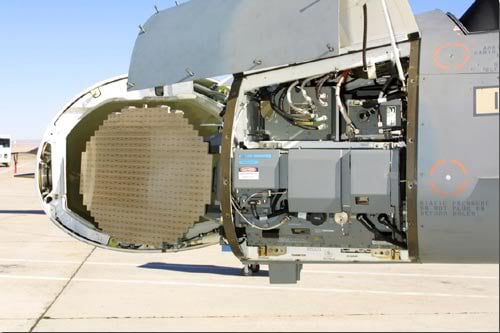U.S. Military
U.S. Military
Case Study #1
F-16 AN/APG-68 Radar System Modular Low Power Radio Frequency (MLPRF) Line Replaceable Unit (LRU)
- One of the poorest performing LRUs on the F-16
- Cracked ribbon cable solder joints
- Massive re-soldering program implemented
- Shotgun approach to maintenance
- No means or equipment to detect intermittence
Results from Intermittent Fault Detection & Isolation System™ (IFDIS™) testing:
- 400 MLPRF LRU chassis IFDIS tested:
- 147 were considered “un-repairable” completely out of service
- 33 had been in the repair depot for over one year
- 9 had been in the repair depot for over three years
- 60% had one or more intermittent fault
- All of these defects were missed by conventional depot Automated Test Equipment (ATE)Cost of a replacement MLPRF LRU chassis is $307,000 each
- Over $39 million worth of flight hardware recovered to date
- Tripled Mean Time Between Failure (MTBF) – cost savings of $11 million
- Reduction in Total Ownership Cost (RTOC) of $50 million achieved on one F-16 LRU chassis family
- Total Government investment $2.2 million – 22 times ROI to date

F-16 Joint Testing Project with the United States Air Force
Case Study #2
F/A-18 Generator Convertor Unit (GCU) Weapon Replaceable Assembly (WRA)
- Second highest degrader in the NAVAIR inventory
- High No Fault Found (NFF) rate
- High Mission Incapable (MICAP) rate
- No means or equipment to detect intermittence or reduce NFF
Results from IFDIS testing:
- All GCUs tested were previously considered Ready for Install (RFI) after comprehensive testing by the repair depot
- 80% of the GCUs tested had one or more intermittent circuit that went undetected using conventional ATE
Case Study #3
EA-6B AN/AIC-45, Intercommunication System, Weapon Replaceable Assembly (WRA)
- High No Fault Found (NFF) rate
- High Mission Incapable (MICAP) rate
- No means or equipment capable of detecting intermittent / NFF
Results from IFDIS testing:
- 71% of the AIC-45s tested had one or more intermittent circuit that went undetected using conventional ATE
Case Study #4
F-16 AN/APG-68 Radar System Antenna Azimuth Elevation (AZ/EL) Shop Replaceable Unit (SRU)
- Grounding F-16s
- Current testing methods and equipment unable to identify defects
- Non-reparable item
- Purchase price $1,600.00each
- IFDIS testing required for GO / NO GO testing
Results from IFDIS testing:
- 95 AZ/EL SRU ribbon cables IFDIS tested:
- 76% tested bad and given a NO/GO for use on F-16 aircraft
- IFDIS is effectively identifying good and bad cables so that good cables are not unnecessarily discarded, and bad cables are not put into F-16 aircraft.
- IFDIS testing of AZ/EL ribbon cables saved the U.S. Air Force over $35,000.00 in just six weeks
Case Study #5
F-16 AN/APG-68 Radar System Antenna
- High MICAP rates
- Conventional ATE unable to diagnose intermittent / NFF issues, improve reliability or lower MICAP rates
- IFDIS testing quickly identified electronic defects and intermittent faults